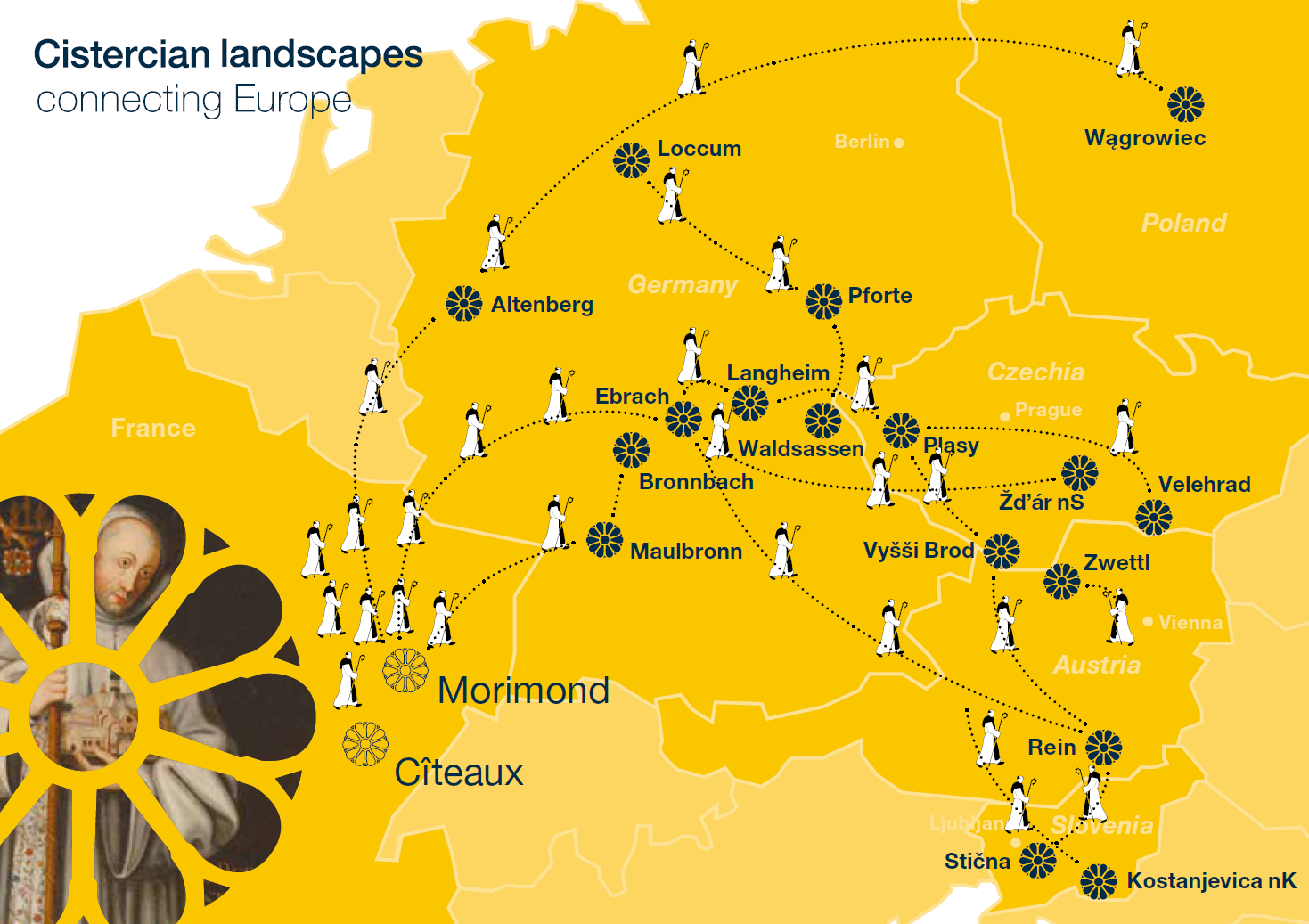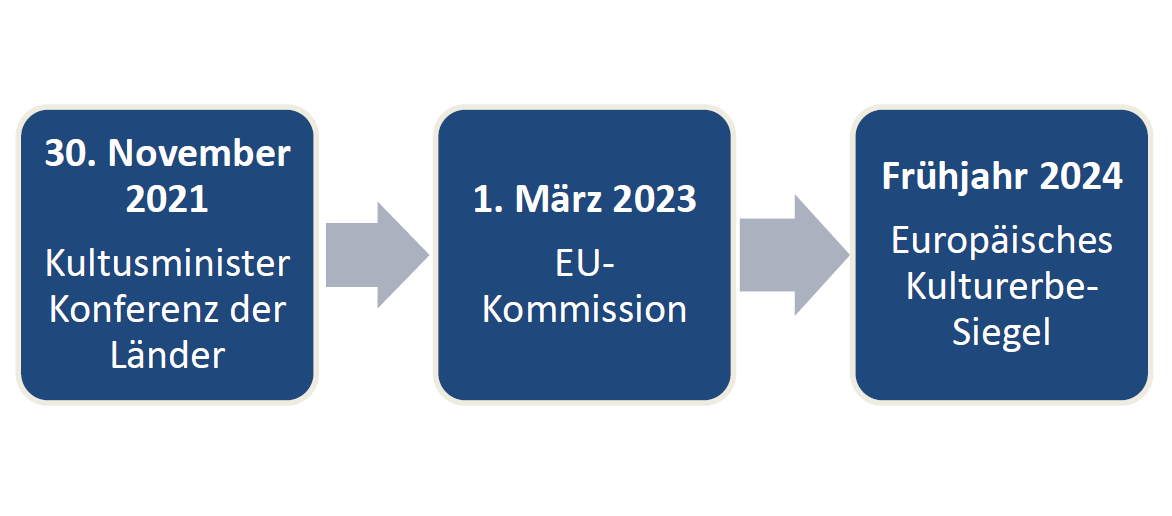Application for the European Heritage Label launched!

The typical elements of Cistercian landscapes unite people across Europe as a common cultural heritage. 17 partners from five countries, led by the district of Bamberg as sponsor and initiator, have taken on this heritage and are jointly applying for the European Heritage Label.
Milestones

Unity in diversity is the motto that unites us.
We are ready to retell our story together.
We are Cisterscapes – Cistercian Landscapes connecting Europe.
European network since the Middle Ages
When the power and wealth of the Benedictines of Cluny seemed to increasingly undermine the original monastic ideals, three monks left in 1098 to found a new monastery in Cîteaux. This place in French Burgundy (lat. cistertium) gave them their name: Cistercians.
They wanted a return to the Rule of St. Benedict. They wanted to live from the work of their own hands:ora et labora – pray and work. Ultimately, this principle was to make them one of the most influential networks of the Middle Ages.
Within just under two centuries, the monks founded a dense network of daughter monasteries that spread throughout Europe. Wherever they were active, they reclaimed the land, established ponds and forestry, viticulture, agriculture and hydraulic engineering. Their agricultural innovation and the systematic transfer of knowledge within the order made their self-sufficiency so successful that the surpluses transformed the markets and power structures of the surrounding regions.
The great days of the White Monks, as they were known because of their undyed sheep’s wool robes, have long since passed. The traces of their work – impressive monastery complexes, magnificent town courtyards, villages, farmsteads, pond landscapes, vineyards, settlement structures and commercial forests – shape our landscapes and the everyday lives of the people who live and work there.
LEADER TNC I and TNC II “Cisterscapes – Cistercian landscapes connecting Europe”
On November 1, 2019, the transnational LEADER cooperation project was launched with 17 monastic landscapes in six European countries. Since October 22, 2020, the project has again received LEADER funding as part of TNC II. The district of Bamberg, as the sponsor and transnational coordinator, would like to apply for the “European Heritage Label” (EHL) for Cistercian monastic landscapes in cooperation with the project partners. Further information can be found here: Projektinfo_Cisterscapes_EKS_20210923
Partner sites: Altenberg, Bronnbach, Ebrach, Langheim, Loccum, Maulbronn, Schulpforte, Waldsassen (D), Wągrowiec (PL), Plasy, Velehrad, Vyšší Brod, Žďár nad Sázavou (CZ), Rein, Zwettl (AT), Kostanjevica na Krki, Stična (SI).


